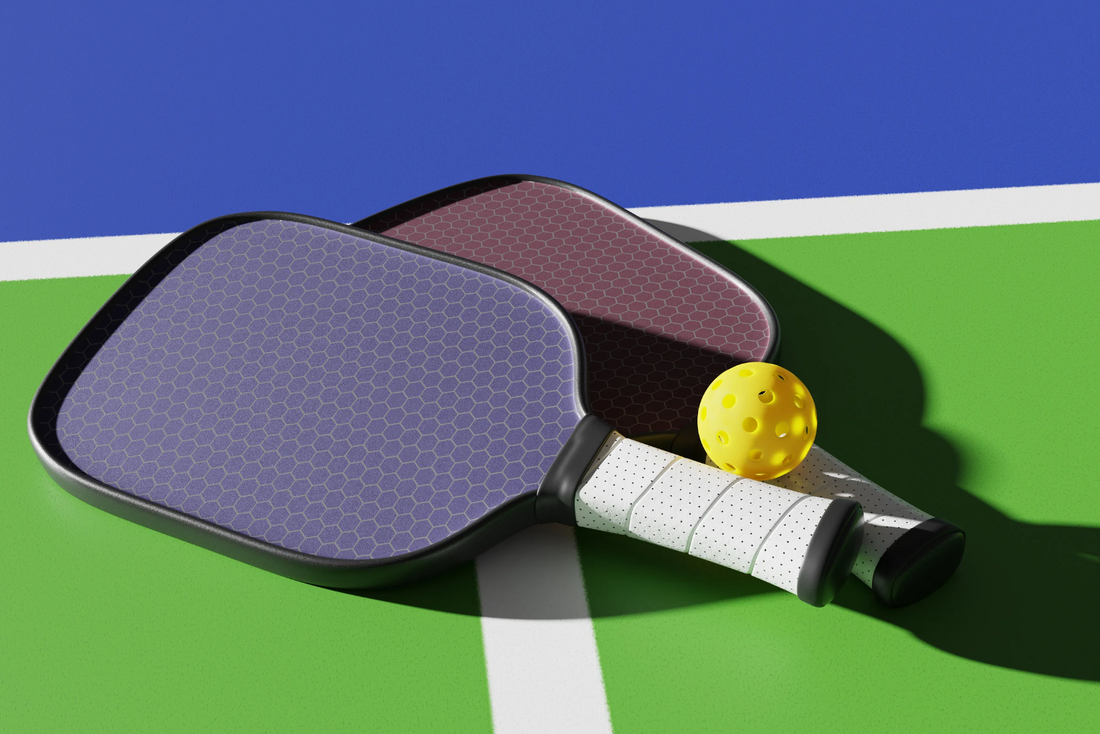
The Evolution of Pickleball Paddle Technology: From Wood to Graphene
Share
Pickleball, once a backyard pastime, has grown into a global phenomenon, with professional tournaments, elite athletes, and cutting-edge equipment. One of the most significant advancements in the sport has been the evolution of paddle technology. From humble wooden paddles to high-performance graphene-infused models, innovation has continuously shaped how the game is played.
The Wooden Beginnings: The Birth of Pickleball Paddles
In the mid-1960s, when pickleball was first created on Bainbridge Island, Washington, players had limited equipment choices. The earliest paddles were repurposed from plywood, resembling oversized ping-pong paddles. These wooden paddles were durable but lacked the finesse needed for spin, control, and speed. While functional, they were relatively heavy and lacked the responsiveness modern players enjoy.
Key Characteristics of Wooden Paddles:
- Weighty and robust – Often exceeding 10 ounces, making prolonged play more taxing.
- Durable but rigid – Lacked the flexibility to provide optimal control or spin.
- Affordable and accessible – A budget-friendly option still used for entry-level or school programs.
The Rise of Composite Materials: Fiberglass and Polymer Innovation
As pickleball’s popularity surged in the 1980s and 1990s, manufacturers began experimenting with composite materials. This shift introduced fiberglass paddles with polymer honeycomb cores, significantly reducing weight while enhancing playability.
Key Advancements in Composite Paddles:
- Lighter weight – Allowed for faster reaction times at the net.
- Enhanced control – Provided a balance between power and finesse.
- Textured surfaces – Improved spin potential, a game-changer for strategic play.
Fiberglass quickly became a popular choice for players who wanted more control and maneuverability. However, as the game evolved, so did the demand for even better materials.
Carbon Fiber and Kevlar: A New Era of Performance
The 2000s saw another breakthrough—carbon fiber paddles. Carbon fiber, known for its lightweight yet ultra-durable properties, became a preferred material among competitive players. The tightly woven fibers created a rigid paddle face, resulting in superior precision and responsiveness.
The Advantages of Carbon Fiber Paddles:
- Exceptional durability – Long-lasting with minimal wear over time.
- Enhanced touch and control – Ideal for finesse shots like dinks and third-shot drops.
- More consistent response – Reduced vibration for better shot accuracy.
Kevlar, another high-performance material, was also introduced in some paddles, offering a blend of strength and vibration dampening. However, carbon fiber quickly outpaced Kevlar in mainstream paddle production.
The Cutting-Edge Revolution: Graphene and Beyond
In recent years, graphene has emerged as the next frontier in pickleball paddle technology. Graphene, an ultra-lightweight yet incredibly strong material, is 200 times stronger than steel while remaining nearly weightless. This nanomaterial enhances both power and durability without sacrificing control, making it an ideal choice for high-performance paddles.
The Benefits of Graphene-Infused Paddles:
- Maximum strength with minimal weight – Enhances swing speed without compromising durability.
- Improved energy transfer – Generates more powerful shots with less effort.
- Superior shock absorption – Reduces strain on the arm and wrist, minimizing injury risk.
As paddle technology continues to evolve, manufacturers are pushing the boundaries with hybrid materials, aerodynamic designs, and AI-assisted manufacturing processes. The goal is to craft paddles that optimize performance for every playing style.
The Future of Pickleball Paddles
What’s next in pickleball paddle technology? With ongoing research into nanotechnology, aerodynamics, and smart materials, the next generation of paddles may feature:
- Integrated sensors – Providing real-time data on shot power, accuracy, and spin.
- Customizable paddle surfaces – Allowing players to adjust texture for different playing conditions.
- Self-healing materials – Reducing wear and tear for prolonged paddle longevity.
As the sport of pickleball continues to grow, so too will the innovations that shape its future. From wooden paddles to graphene-infused marvels, each advancement has elevated the game, allowing players to reach new levels of skill and strategy. Whether you're a recreational player or a competitive athlete, understanding paddle technology can help you choose the perfect gear to enhance your game.
The next time you step onto the court, take a moment to appreciate the evolution of your paddle—because behind every great shot is decades of technological ingenuity.












